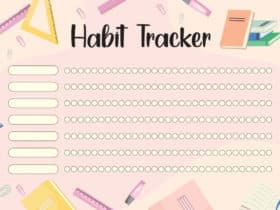Idea dumping is a lot like brainstorming. (I happen to be an expert on idea dumping because I just made the term up 5 minutes ago.). Brainstorming to me is more of a process where you have a problem, and you try and find a solution to it, with the end goal in mind. It’s a great concept in theory–except it never happens that way for me. It seems like whenever I really need a great idea, they are nowhere to be found. Yet when I’m doing something completely unrelated and seemingly unimportant, I’ll be floating in ideas. And when the mind finally does agree to cooperate and turn on, I won’t usually get just one good idea but a bunch of ‘em at a time. When it rains it pours, but it’s a summer in Texas otherwise.
It’s more like my brain all of the sudden opens up and throws out a flurry of ideas, a proverbial diarrhea of the brain. Except with a good connotation, (unlike most comparisons to bowel movements). So I’ve decided to call this process Idea Dumping to kind of fuse Brainstorming and, well… the bowel thing. So if you haven’t already quit reading this post, here are my 7 tips for effective Idea Dumping.
1. ALWAYS carry paper
It almost always never fails. I’ll have a great idea, I’ll think about it for a while, and never remember it again. Why? I didn’t write it down. Half of having a good idea is actually writing it down. Writing it down gives you freedom to let your mind explore it even more, because it doesn’t have to work on actually remembering it. If paper isn’t your thing, use a voice recorder, your cell phone’s voicemail, a pda, a rock and chisel… anything so that you can file it somewhere other than your brain.
2. Be descriptive when writing it down
There have also been times where I’ve written an idea down quickly, and then looked at it later and had no idea I was talking about. The more descriptive you are, the better you can get back into your train of thinking when you wrote it down, like picking up where you left off. Also, being more descriptive frees up your brain’s resources to develop the idea even further.
3. Plan for not planning on it
One problem with the way we typically brainstorm is this: it’s unnatural. We bang our heads against the wall while chanting “think, think”. If you’re like me, your brain doesn’t like to be told what to do. The second I sit down and “make” myself be creative, my brain goes on lockdown. Nothing in, nothing out. There’s no such thing as forced creativity.
I’ve found that the best way to allow your mind to form ideas is when I’m doing something else. You have to be ready at anytime to jot something down. I know this point is a lot like #1, but I can’t stress it enough.
4. Good environments matter
Allow yourself time to let your mind breathe and relax. I’ve found that the best times to have idea dumps are when you’re in an aesthetically pleasing environment, or at least one where you’re enjoying yourself. A lot of times the ideas start coming when I’m running, or talking a walk in nice weather. You my find yourself partial to different situations. It really doesn’t matter, just so long as what you’re doing somewhat automated and your mind can freely wander wherever it wants. In short; you’re giving yourself time to daydream.
5. Think big picture down
Ok, so I realize that there will be times when you’ll actually have good ideas when you are forced into brainstorming on a certain problem. A good strategy for finding solutions to a specific problem is always thinking top down. In David Allen’s Getting Things Done, you should always start with asking yourself why you’re doing it. Why are you trying to find the solution? Why is it important? It sounds mind-numbingly simple, but it really helps you focus your thinking on the problem, rather then going off on tangents.
6. Organize your thoughts
Once your ideas have stopped coming, be sure to organize them more coherently once you’re done. This will help you get a better handle on what you’ve discovered, and you’ll remember it better in the long run. (If you were descriptive in writing down your ideas, you’ll find it speeds this process up. ) Once you’ve got them organized, break them into actionable steps ( another component to GTD). You’ll quickly realize what needs to be done next to implement your ideas, in what order, etc.
For me, notecards are my weapon of choice. I always keep a few handy, and I organize my ideas into ideas. If a project has more than one thought to it, I assign it it’s own card. If it’s something simple like a future post title, I put it on the “catch-all” notecard that holds just quick ideas. Later I’ll take the day’s cards and process them further.
7. Know when to stop
Don’t force the issue, man! You could hurt yourself if you’re not careful. If the well of ideas has run dry, pumping it more won’t help. Don’t worry, there will be other times of plenty in terms of ideas. Use what you you’ve been given and start to implement them. Sometimes you won’t get all you need in one dumping session, like this post. Ironically enough, this article was a product of 3 idea dumps, spread over a couple of weeks.















